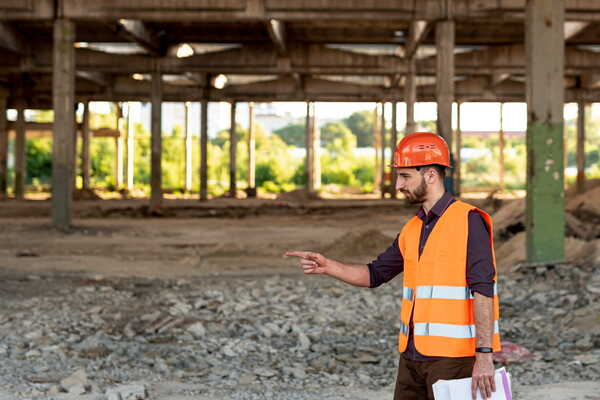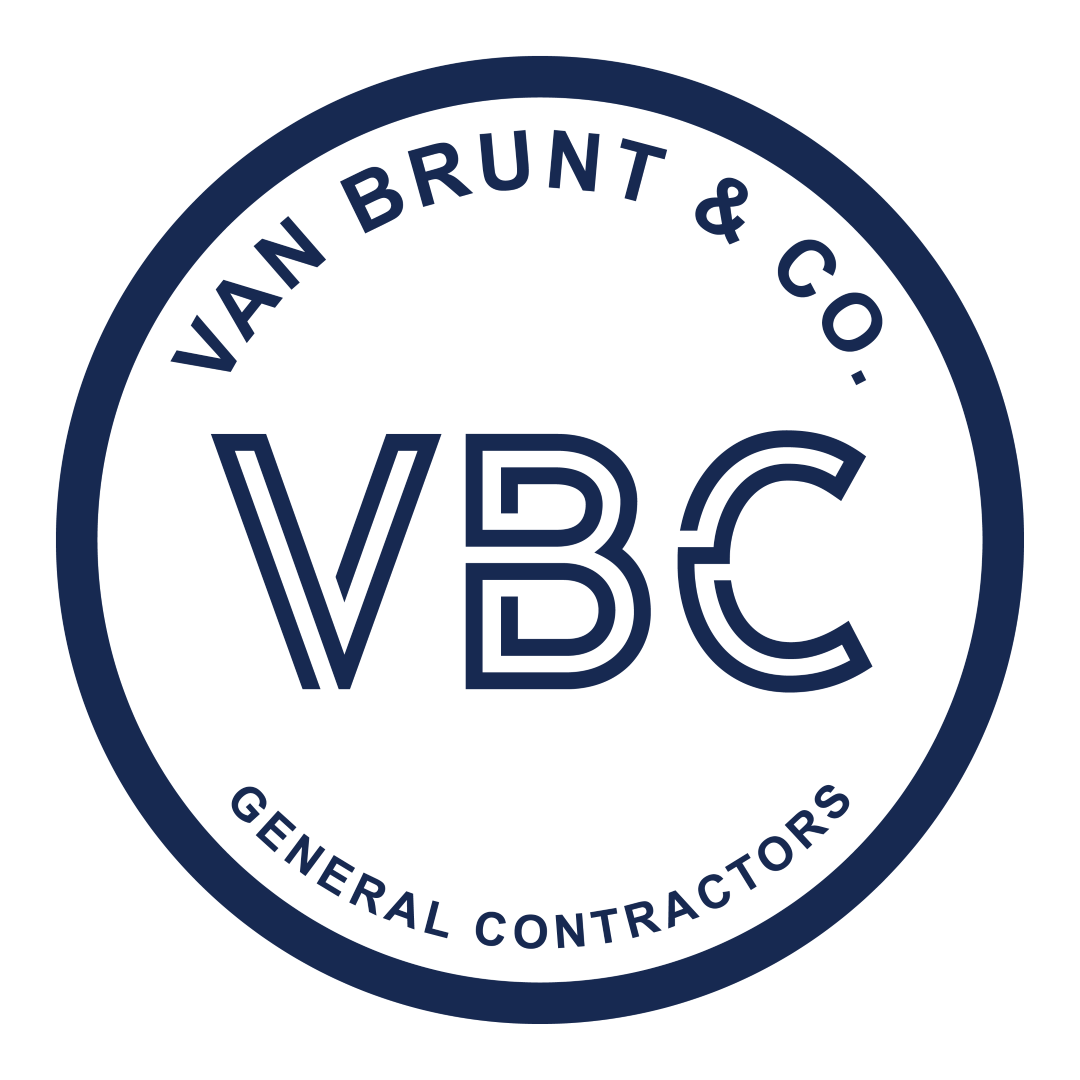When opening a restaurant, unexpected changes and delays during construction are common. The key to minimizing risk is to have a robust plan for handling change orders and construction delays efficiently. Van Brunt & Company’s experienced project teams help owners manage these challenges while keeping the main goal, opening on time and on budget, within reach.
Imagine investing your heart and savings into your dream restaurant. Construction starts, but suddenly, a delay derails your launch date. The cost mounts with every day lost. Stress rises as you juggle contractors, inspectors, and shifting schedules. Every miscommunication creates another hurdle. However, owners who implement proactive systems, trust strong partners, and plan for the unexpected can protect their investment and peace of mind.
This article explains step-by-step how to anticipate, negotiate, and manage changes and delays. You will learn how to keep your project moving, maintain transparency, and avoid common pitfalls. You will also see why understanding restaurant builder contracts is vital to your success.

Foundations of Change Orders and Construction Delays
Every restaurant construction project, no matter how well-planned, faces change. Owners, designers, and builders must adapt when new ideas, supply issues, or hidden site problems arise. Effective management of these shifts keeps budgets and building timelines on track.
What Is a Change Order?
A change order is a written agreement modifying the original construction contract. It documents any alteration, big or small, requested after work begins. Change orders may result from new code requirements, material substitutions, or owner-requested design tweaks. They are critical because they clarify cost, time, and scope impacts before work proceeds. According to the American Institute of Architects, best practice is to issue a signed, detailed change order every time scope or schedule shifts. Verbal agreements or undocumented changes lead to disputes and financial headaches down the line.
Common Causes of Construction Delays
Construction delays are nearly as common as change orders. Causes include weather, material shortages, permit hold-ups, and labor constraints. For restaurants, changes in kitchen equipment specs or health code requirements often lead to unexpected work stoppages. The National Restaurant Association notes that even experienced teams face delays. The best approach is to anticipate bottlenecks and add contingencies in the schedule from the start. Building a cushion for critical path activities and regular communication with all stakeholders reduces stress and protects opening dates.
Importance of Documentation and Transparency
Proper documentation underpins efficient change order and delay management. Every change, no matter how minor, should be logged, tracked, and communicated to all parties. Transparent records provide a historical account, support decision-making, and prevent miscommunication. Clear, accessible documentation allows owners to see how each decision impacts cost and schedule. For instance, companies that specialize in ground-up commercial construction solutions maintain rigorous logs and digital tracking tools to provide real-time updates. This level of transparency is essential to building trust, keeping all parties aligned, and ensuring legal compliance.

Core Strategies for Efficient Change and Delay Management
Efficiently managing changes and delays requires more than good intentions. Proven strategies, when implemented consistently, reduce cost overruns, avoid project gridlock, and deliver better results for restaurant owners.
Proactive Planning and Communication
Success begins long before the first shovel hits the dirt. Proactive planning means anticipating change by conducting preconstruction meetings, clarifying expectations, and defining escalation paths. Open, honest communication channels help the team react quickly when problems arise. Restaurant owners who work with builders employing structured kickoff sessions and weekly check-ins experience fewer surprises. Resources like Harvard Business Review’s project management analysis highlight that regular status updates and transparent reporting prevent small issues from snowballing. Proactive communication is especially crucial for tenant improvement projects, where existing conditions often require on-the-fly decisions.
Establishing Clear Change Order Protocols
Clear protocols keep changes from becoming chaos. Every project should specify how changes are submitted, approved, and tracked. This includes standardizing change order forms, defining who has authority to approve modifications, and setting timelines for responses. Builders who offer comprehensive tenant finish construction services often have robust digital portals, making it easy for owners to submit requests and see status in real time. Standardizing the process not only prevents misunderstandings but also keeps the project moving. According to the Construction Management Association of America, having a set workflow and accountability structure is a best practice for minimizing disruption.
Leveraging Project Management Technology
Today’s restaurant builds increasingly rely on digital tools to manage every phase. Cloud-based project management platforms offer live dashboards, automated alerts, and centralized documentation. These systems increase transparency, accelerate decision-making, and reduce administrative bottlenecks. Many builders leverage such technology to manage schedules, track budgets, and facilitate collaboration. This technology-enabled approach is particularly valuable when coordinating with multiple vendors, designers, and inspectors. Forward-thinking owners who partner with firms specializing in commercial remodeling solutions benefit from smoother workflows and fewer surprises. Technology is not a silver bullet, but it empowers teams to spot and resolve potential issues before they become costly delays.
Healthcare providers, for example, often adopt strategic digital presence approaches to keep all stakeholders informed and aligned throughout complex projects.

Implementation: Real-World Application and Best Practices
Understanding the basics and strategies is just the beginning. Successful owners use practical steps, best practices, and situational awareness to implement effective change order and delay management during construction.
Step-by-Step Change Order Implementation
When a change arises, act quickly. First, document the request in writing, and never agree verbally. Next, clarify the impact on time, cost, and project scope. Collaborate with your builder and design team to evaluate alternatives and determine the best course of action. Once all parties agree, sign a formal change order before any new work begins. This ensures legal protection and avoids payment disputes. Trusted partners, like those with a proven track record of transparency, streamline this process through clear protocols and consistent follow-up. Every documented change becomes part of the project’s historical record, reducing confusion for everyone involved.
Best Practices for Handling Delays
When faced with a delay, communication is critical. Immediately inform your entire project team, contractor, architect, suppliers, and investors, so everyone can adapt plans. Document the reason for the delay, assess its impact, and explore mitigation options, such as re-sequencing work or finding substitute materials. Maintain regular project meetings and detailed daily logs. The U.S. Small Business Administration’s guide recommends negotiating realistic schedule adjustments and establishing contingency plans. Consistent documentation and accountability ensure issues are resolved promptly, and trust remains intact.
Considerations for Owner Involvement
Active involvement from the owner keeps the project on track. Attend site visits, participate in decision-making, and request weekly progress reports. Ask questions, seek clarification, and challenge assumptions when needed. Being present allows you to spot potential issues early and reinforces your commitment to the project. Owners who engage fully, without micromanaging, create a collaborative environment. This engagement is particularly important when complex changes arise or unforeseen delays threaten key milestones. If problems escalate, do not hesitate to seek professional support for resolution. Professional involvement ensures issues are addressed quickly and fairly, keeping your restaurant opening on schedule.
Modern businesses also utilize targeted outreach strategies to communicate changes clearly to all project partners and stakeholders.

Advanced Solutions and Future-Proofing Restaurant Construction
The most successful restaurant owners use advanced tools, metrics, and future-oriented strategies to ensure their projects not only survive changes and delays but thrive.
Advanced Risk Mitigation Concepts
Proactive risk management distinguishes resilient projects. Begin with a comprehensive risk assessment, identifying likely sources of change and delay. Collaborate with your construction partner to create mitigation plans for each scenario. This includes identifying secondary suppliers, alternative materials, and backup tradespeople. Builders with experience in ground-up commercial construction projects often develop “playbooks” for handling common disruptions. Engage legal counsel to review contracts and ensure provisions are in place to address unexpected events. Monitoring industry trends and regulatory updates helps teams adapt before problems arise. The Associated General Contractors of America recommends continuous risk assessment throughout the project lifecycle.
Measuring and Evaluating Success
Tracking and evaluating how well you handle change orders and delays is essential. Set clear benchmarks, such as response time to change requests, average cost impact per change, and percentage of on-time milestones. Use project management software to generate reports and spot trends. After project completion, conduct a thorough review to identify lessons learned and areas for improvement. Builders who emphasize continuous improvement frequently share performance metrics with clients, fostering a culture of transparency and accountability.
Preparing for Future Challenges
The construction industry is evolving, and restaurant projects are becoming more complex. Staying ahead means adopting flexible contracts, investing in ongoing team training, and integrating emerging technologies. Track regulatory changes, supply chain innovations, and sustainability standards to future-proof your build. As the sector faces ongoing material shortages and skilled labor gaps, agility becomes essential. Partner with firms that prioritize knowledge sharing and continuous learning. Owners who embrace a forward-thinking mindset are better equipped to handle whatever comes next. Implementing comprehensive online visibility strategies in project documentation and communication ensures all stakeholders stay informed and engaged, supporting long-term project success.
Conclusion
Efficiently handling change orders and construction delays is essential for any successful restaurant construction project. By understanding the importance of documentation, clear communication, and proactive planning, owners can minimize surprises and keep their opening on track. The most successful projects happen when owners choose the right restaurant builder, set clear expectations in contracts, and stay actively involved throughout the process. With the right systems in place, even unexpected setbacks become manageable, and costly mistakes can be avoided.
Partnering with a trusted team, supported by strong contracts and transparent processes, makes all the difference. Investing in these strategies protects your timeline, your budget, and your vision, ensuring your new restaurant opens on time, ready to thrive.
Frequently Asked Questions (FAQ)
What is a construction change order?
A construction change order is a formal, written modification to the original contract, documenting changes in scope, time, or cost.
How can owners minimize construction delays?
Owners can minimize delays by maintaining proactive communication, regularly attending site meetings, and documenting all changes promptly.
Why is documentation important during restaurant construction?
Documentation prevents miscommunication, protects against disputes, and ensures everyone understands how changes affect project outcomes.
Who approves change orders during a restaurant build?
Typically, the project owner and builder must both approve and sign any change order before additional work begins.
What should owners do if a delay threatens the restaurant’s opening date?
Assess the cause, communicate with your project team, and develop a mitigation plan to adjust schedules and minimize impact.

